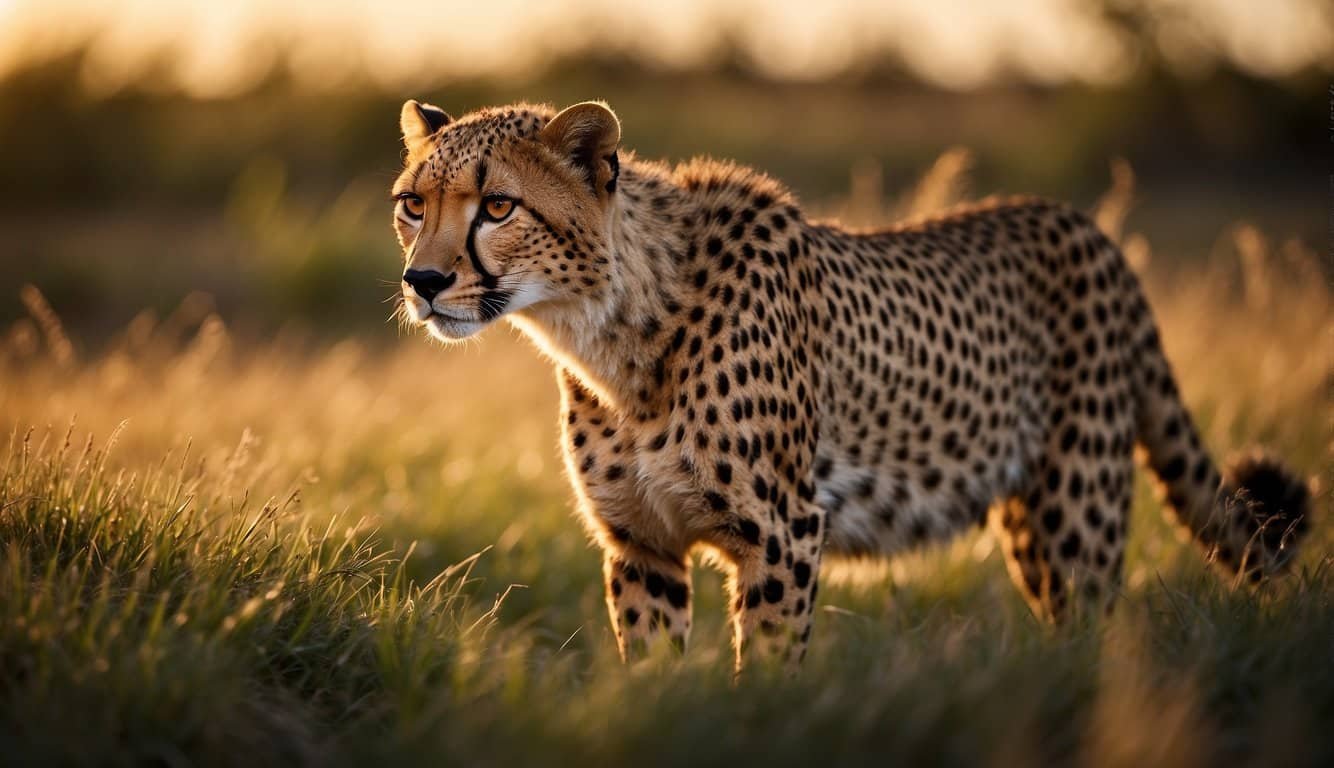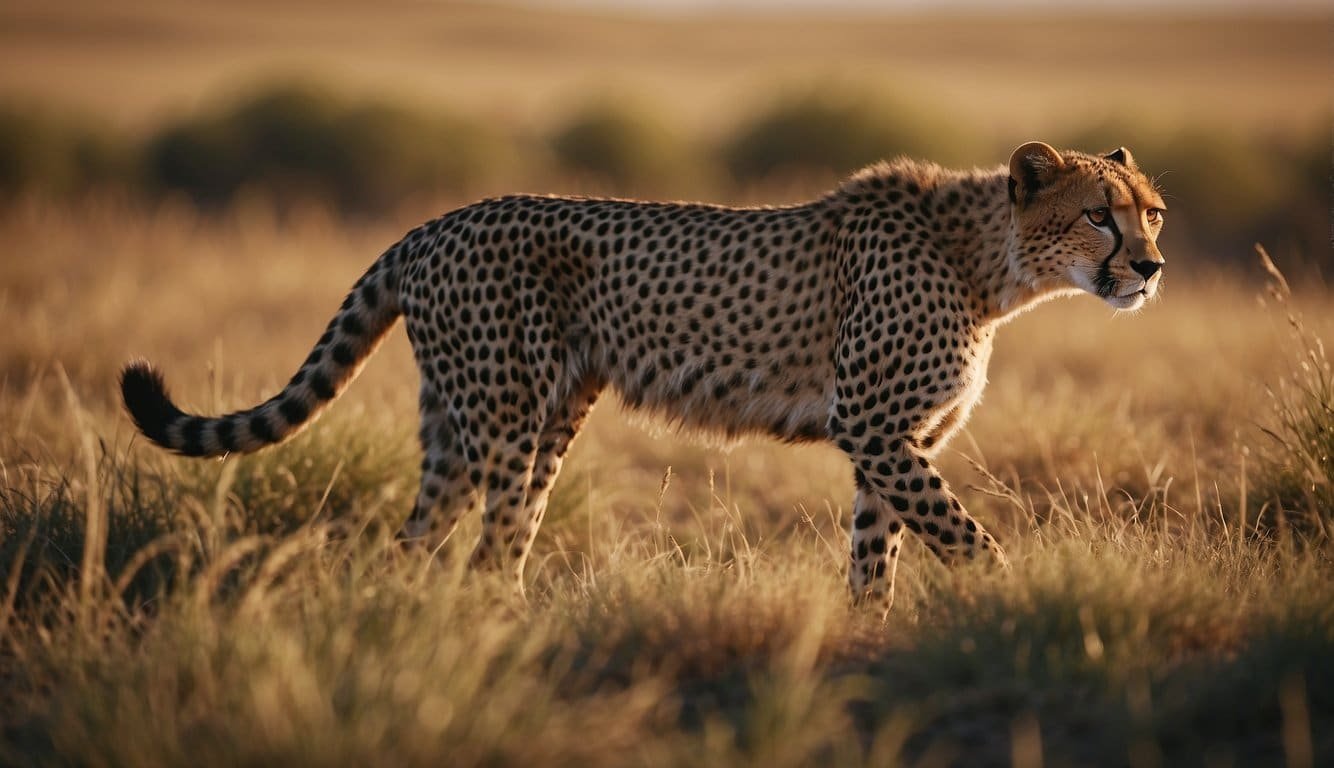Cheetah Overview

The cheetah is renowned for its incredible speed and elegant body, making it a standout among the big cats. Its distinctive spots and sleek build are adapted for high-speed chases in the varied landscapes of Africa and Asia.
Physical Characteristics
Cheetahs are slim, tall, and have a finely-chiseled head with a flat face and high-set eyes. They are known for their sleek body covered with unique black spots which serve as camouflage. They boast a sizeable lung capacity and muscular tail that helps in steering and balance during sprints. With long legs and a lightweight frame, they can accelerate from 0 to 60 miles per hour in just a few seconds.
Habitat and Range
Cheetahs are found primarily in the open savannas and grasslands of sub-Saharan Africa, but small populations also exist in northeastern Iran. They prefer habitats where they can use their exceptional speed to chase down prey. Due to habitat loss and other threats, their range has greatly diminished and they are now largely confined to protected areas.
Diet and Hunting
A cheetah’s diet consists primarily of small to medium-sized prey, including hares, birds, and antelopes. Their hunting method is a spectacular dash rather than stealth, culminating in a high-speed chase that tests both their speed and their prey’s endurance. They often hunt alone or in small family groups, and are most active during the day, particularly at dawn and dusk.
Conservation and Threats

The cheetah faces a precarious future with pressing threats that challenge its survival, necessitating human intervention to bolster conservation efforts.
Challenges in the Wild
Cheetahs are sprinting against a rising tide of challenges, including significant habitat loss due to expanding human development. Their vast territories are becoming increasingly fragmented, which not only affects their prey base but also puts them in greater conflict with human interests. As these spaces dwindle, so does the hope for cheetahs to thrive in their natural habitats.
Human Impact and Conservation Efforts
Human activities have placed cheetahs on the delicate brink of extinction. Farming and urbanization cut through their environments, driving them into smaller pockets of land. Cheetahs often come into contact with livestock, which can lead to lethal control measures by those protecting their herds. Conservation initiatives are in place, with protected areas and reintroduction projects attempting to reverse the decline. These efforts often involve working with communities to foster coexistence and mitigate direct mortality caused by predators, yet the balance is delicate and the cheetah’s future is uncertain.

